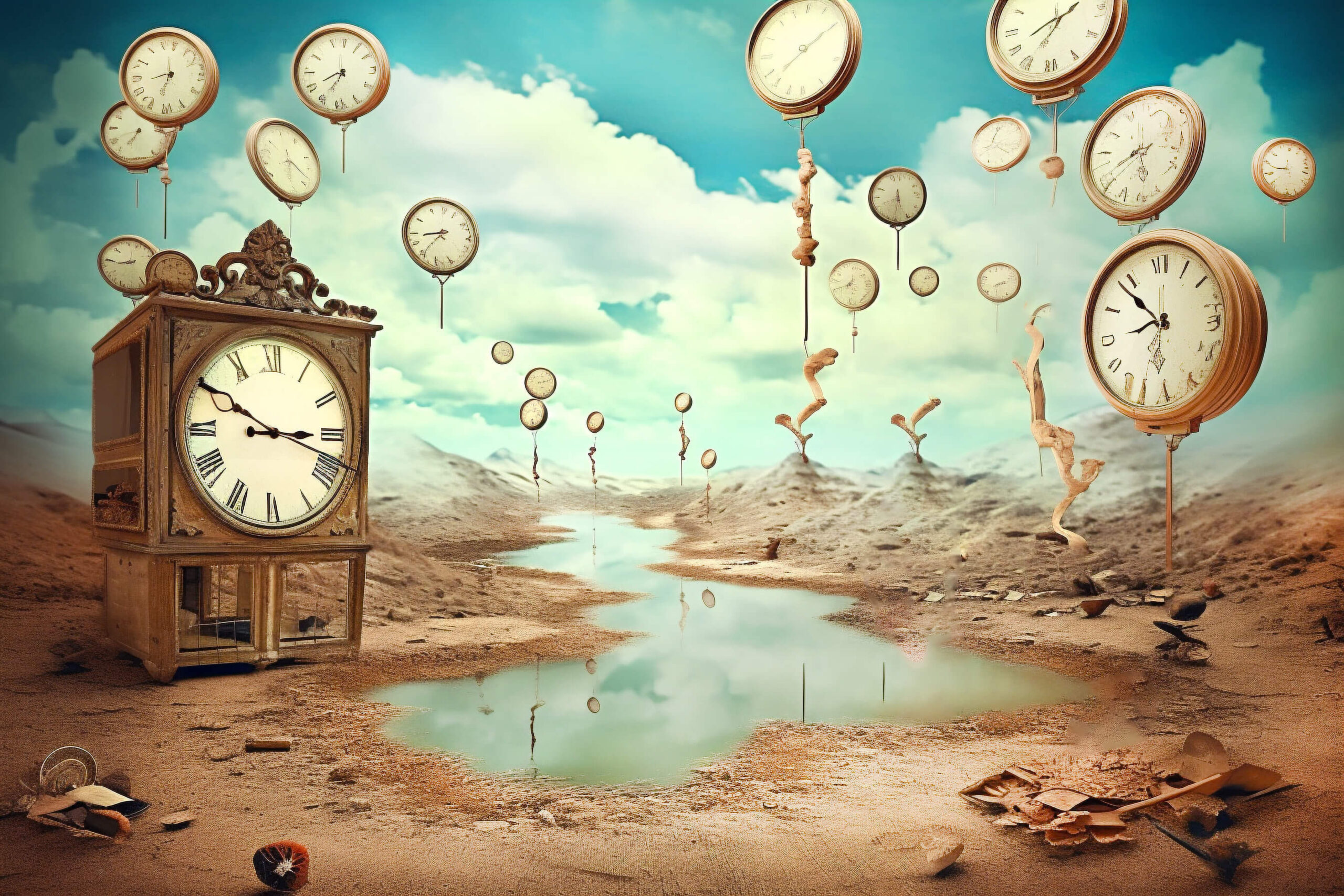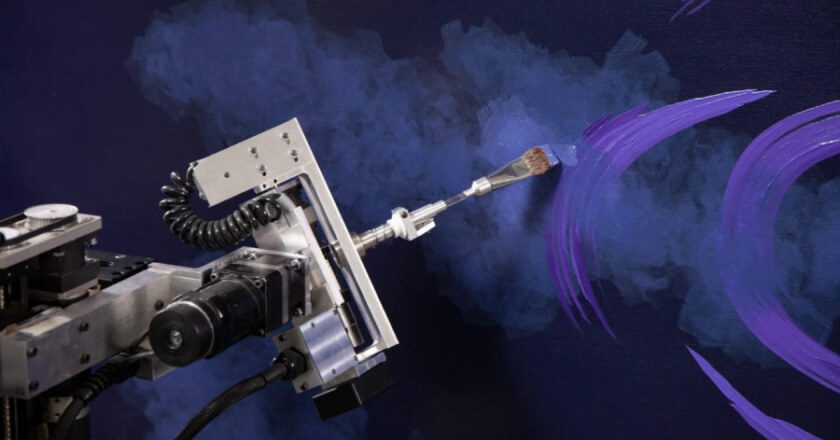Get Inspired
Build the life you love. Learn more about fusioneering:

Posted on April 21, 2023 in Art History
Melting clocks, Victorian businessmen with bird heads, and pipes that aren’t pipes… are these elements from some strange dream, or subjects from one of the most recognizable art movements? The answer is: both.
Welcome to Surrealism, where dreams and reality coexist and transform our perceptions. What are the roots and meaning behind this wild movement, and how did it get started? Let’s jump in and find out.
Related: More Great Art Movements – Discover Modern Art
Surrealism is an artistic, intellectual, and cultural movement that rose out of post-World War I Europe and persisted through and after the Second World War. Surrealist art rejects rational thinking and reality in favor of exploring what lies within the world of the subconscious mind. André Breton, the movement’s founder, claimed that the aim of Surrealism was to “resolve the previously contradictory conditions of dream and reality into an absolute reality, a super-reality.”
The Surrealists worked within this super-reality, or “surreality.”
The movement would produce an incredible variety of thought-provoking literature, paintings, music, theater, films, photography, and other media – some of which defy categorization. The focus of Surrealism was not in specific stylistic choices to be adhered to, but rather in the unified mindset of the surreal. Many of the Surrealists saw their works as secondary to the movement, feeling that experimentation in the subconscious and revolutionary action were the core foundations of what they were trying to achieve.
Surrealist works generally lack the defining characteristics of other artistic styles (such as common color palettes, brush techniques, rules of composition, etc.), but do feature some recurring themes, like the usage of automatism, non sequitur, surprise, juxtaposition, and the exploration of dreams and Freudian psychology.
The Surrealists were looking for ways to depict dreams and other visions of the subconscious mind with as little filter or censorship as possible. To do this, they employed a method they called “automatism.” This was the act of automatically reproducing the mind’s deepest thoughts as soon as they formed.
There were many means of achieving automatism – Salvador Dalí, famously, used a teaspoon. He would lie down on a sofa in his studio and hold the spoon in his hand, positioned over a saucer on the floor. When Dalí drifted off, he would drop the spoon into the saucer and be awakened by the clatter, and would then paint whatever he saw in his brief moment of unconsciousness. Dalí would often refer to his works as “hand-painted dream photographs.”
Like many movements of the era, Surrealism was created as a means to undermine and overthrow the oppressive elements of society through artistic resistance. The Surrealists supposed they could destabilize the bureaucracy, rules, and oppressive power structures of modern society by subverting and tearing-down rational thinking and reality with a different, “superior reality.” Surrealism was a deeply political movement, with the aim being to liberate the minds of the masses.
After World War II, a great deal of the artists formerly based out of Paris had become scattered and disillusioned. Many of the artists feared that their artistic celebrations of rationality, wealth, and the bourgeois were, in part, to blame for the war and the state of the world. These artists turned to Dada, a new avant-garde movement that rebelled against the bourgeois by embracing nonsense.
Dadaist poet André Breton had been following breakthroughs by Sigmund Frued in a new field known as psychology – specifically, the concepts of free association, dream analysis, and the unconscious. Breton, seeking to revolutionize the human experience for the better, began work on his Surrealist Manifesto, which was published in 1924.
In his manifesto, Breton railed against an over-rationalized society, one that was increasingly using logic and reason to defend war, killing, and dehumanization. Breton explained how the world was made increasingly stagnant and boring as a result of too much concern with reason, which left no room for creativity, fantasy, flair, or fun. He claimed the answer lay within us all, in our creative subconscious – the root of our soul.
Unlike many artistic movements, the artists of Surrealism – hailing from a variety of different nations and backgrounds – believed in the power of working toward a common goal. They participated in a great many group projects and collective works in addition to their solo efforts.
Key figures in the movement include, in addition to Breton, Salvador Dalí, Max Ernst, and René Magritte. Their influence was colossal, and their works went on to shape the foundations of countless art movements to follow.
Surrealism was not just a cultural revolution, but also a revolution of the mind, exposing the public to fundamentally different ways of thinking and experiencing the world. The Surrealists saw great power within the fantastic landscape of our dreams, and challenged the world to find magic and beauty in the unexpected and unconventional. By liberating our minds and our forms of expression, the Surrealists liberated our potential. Just as a painter is unlimited in what they can put to canvas, so too are all people unlimited in what they can create and bring to the world.
Looking to explore the many forms art can take? Why not start with paintings made by AI and robotics? Paul Kirby and robot painter Dulcinea redefine the act of painting in their gallery of works, and their incredible story can be seen from the beginning in the award-nominated short film, Brushstroke.
For even more inspirational content, you can follow the Kirby Foundation on Instagram and Facebook, and don’t forget to subscribe to our mailing list to stay up-to-date with every amazing development at the intersection of art & science!
Are you interested in hearing the complete story of Paul and Dulcinea? Watch the video (nominated for Best Short Film at the 2021 Vail and Portland Film Festivals) for more info.
Want to be the first to know about every exciting new project at the Kirby Foundation?
Join Our Mailing ListBuild the life you love. Learn more about fusioneering:
Why pick which passion you should follow? Fusioneering allows you to cultivate many interests into something innovative and revolutionary.

Meet Paul and explore how blending your interests can empower you to follow your enthusiasm and bring your passions to life.